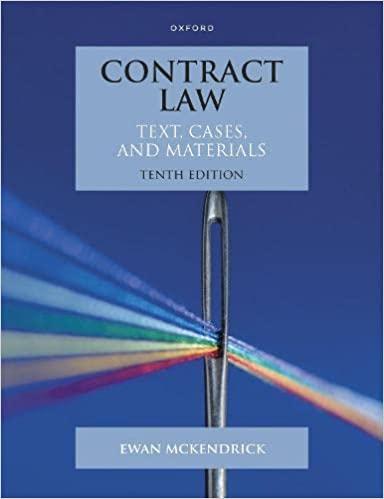Question
There are N cities (numbered from 1 to N, from left to right) arranged in a row and N-1 one-way roads between them: 123...N-1N. The
There are N cities (numbered from 1 to N, from left to right) arranged in a row and N-1 one-way roads between them: 1→2→3→...→N-1→N. The government has a plan to build M new roads. The roads will be built one by one. The K-th road will connect the A[K]-th city with the B[K]-th city (roads are numbered from 0 to M-1). Each road will lead from the left to the right, from a city with a smaller number to a city with a larger number. No two roads will intersect. Formally, there will be no two roads A→B and C→D, such as A Jack lives in city number 1 and his school is located in city number N. He wants to know the distance from home to school after each new road is built. Write a function: class Solution { public int[] solution(int[] A, int[] B, int N); } that, given two arrays A, B consisting of M integers each and an integer N, returns an array D consisting of M integers, where D[K] denotes the distance from home to school after building the first K roads. The distance is the minimum number of roads required to move between two cities. Examples: 1. Given A=[2,5,1], B=[4,7,4] and N=7, the function should return [5,4,3]. After building the first road (2→4), the shortest path from home to school is: 1→2→4→5→6→7, and its length is 5. After building the second road (5→7), the shortest path from home to school is: 1→2→4→5→7, and its length is 4. After building the third road (1→4), the shortest path from home to school is: 1→4→5→7, and its length is 3. 2. Given X=[1,1,1], Y=[7,4,6] and N=7, the function should return [1,1,1]. After building the first road (1→7), the length of the shortest path from home to school is 1. The roads built subsequently do not improve the result. 3. Given X=[30,50,40], Y=[40,60,50] and N=7, the function should return [90,81,72]. Each new road shortens the distance from home to school by 9. Write an efficient algorithm for the following assumptions: - N is an integer within the range [1..100000]; - M is an integer within the range [0..100000]; - each element of arrays A and B is an integer within the range [1..N]; - A[K] < B[K] for each K within the range [0..M-1]; - A and B have the same length; - there are no two identical roads; - there are no two intersection roads.
Step by Step Solution
There are 3 Steps involved in it
Step: 1

Get Instant Access to Expert-Tailored Solutions
See step-by-step solutions with expert insights and AI powered tools for academic success
Step: 2

Step: 3

Ace Your Homework with AI
Get the answers you need in no time with our AI-driven, step-by-step assistance
Get Started


